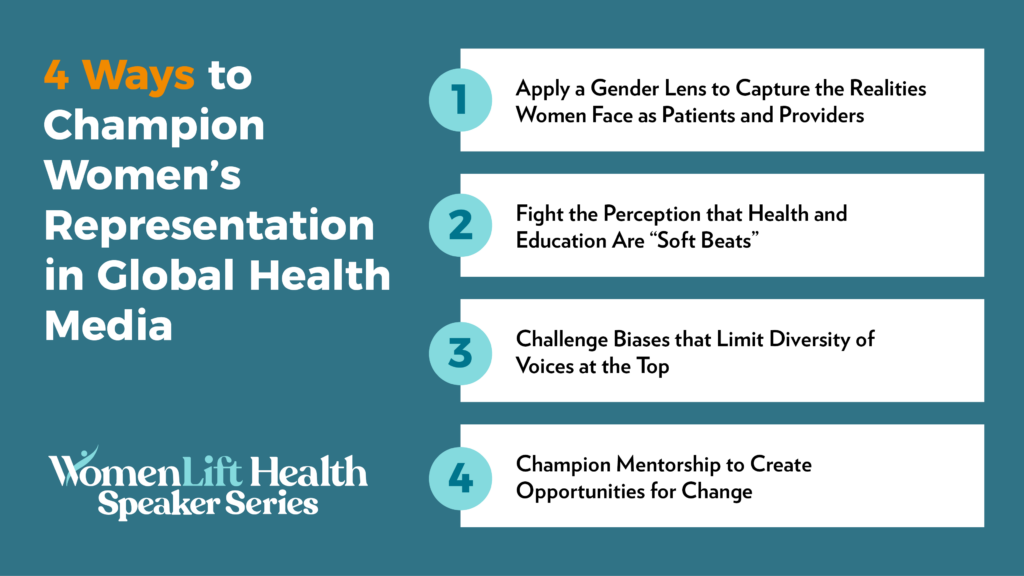In the most recent installment of WomenLift Health’s “Gender and Power” Speaker Series, we explored the topic of “Women’s Voices & Representation in Media” with experts from India, Kenya, and the United States. Anubha Bhonsle, Founder and Editor of NewsWorthy; Laurie Garrett, a Pulitzer Prize-winning science writer; and Anne Mawathe, Africa Health Editor of BBC joined Michele Barry, WomenLiftHealth’s Founder and Director of Stanford Global Health to discuss the impact of diversity in media on healthcare coverage and how organizations can take steps to ensure equitable representation and elevate female voices. Here are four key takeaways from the discussion on the importance of women as subjects, reporters, sources, and newsroom and news organization leaders.


- Apply a Gender Lens to Capture the Realities Women Face as Patients and Providers
- Fight the Perception that Health and Education Are “Soft Beats”
- Challenge Biases that Limit Diversity of Voices at the Top
- Champion Mentorship to Create Opportunities for Change


